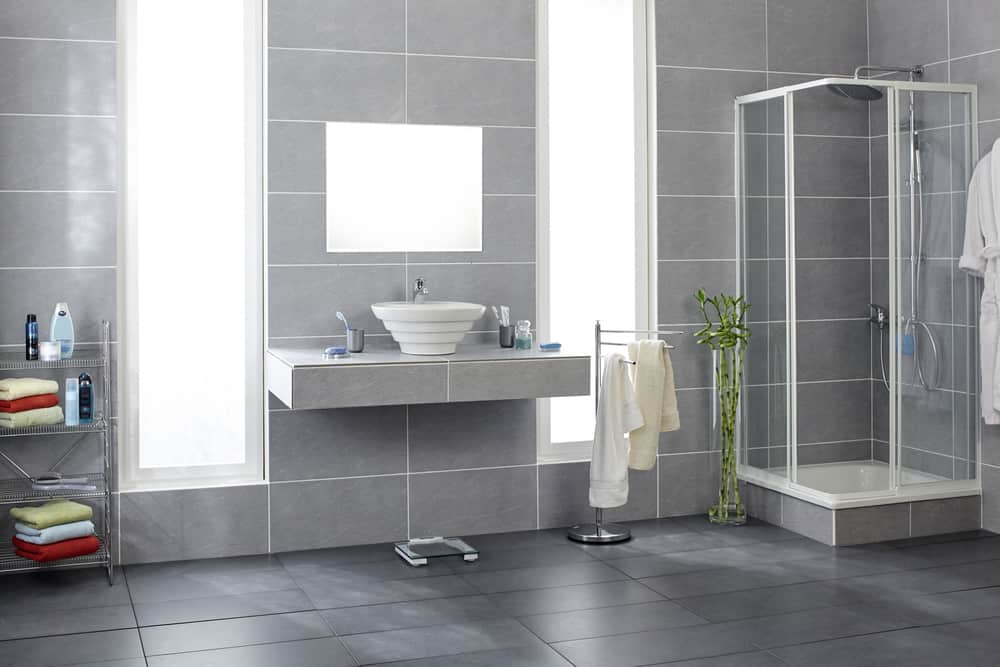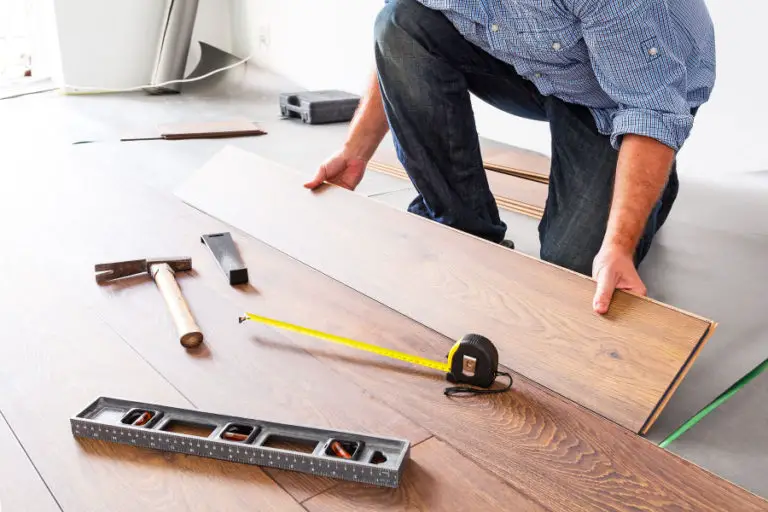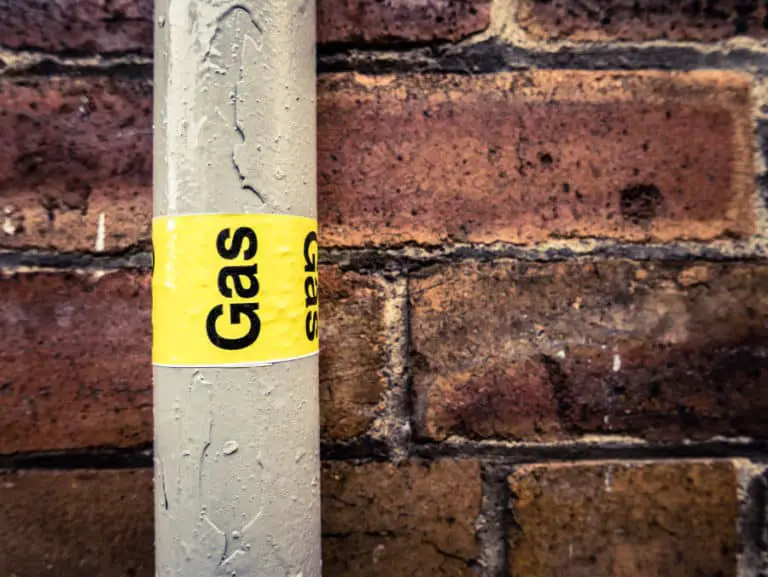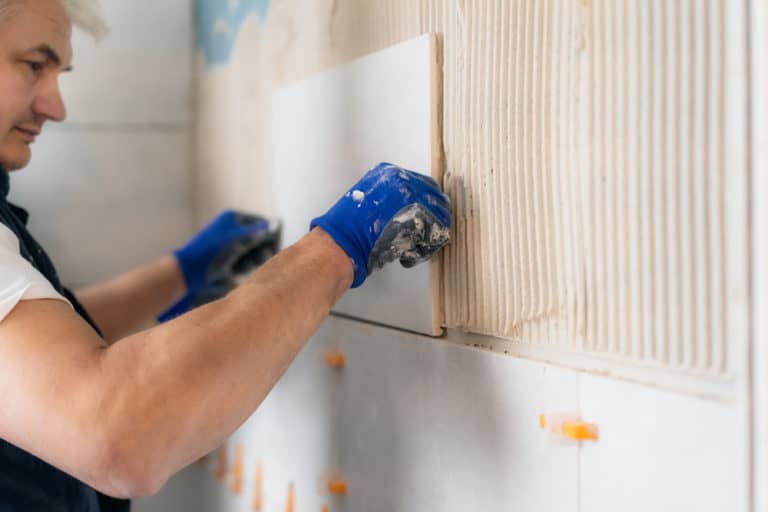Porcelain Or Ceramic Tiles For A Bathroom?
Tiles are one of the most common types of flooring used in bathrooms. Some people love the look of shiny porcelain tiles, while others prefer the classic look of ceramic tiles. They come in a variety of styles, textures, and colors.
The type of tile you choose depends on style, texture, and colors. Every person has a different opinion on what they want in their bathroom. Some people love the look of shiny porcelain tiles, while others prefer the classic look of ceramic tiles.
Below, we will discuss the difference between porcelain and ceramic tiles, the pros/cons, and the factors to consider before purchase.
Factors to Consider Before Purchasing Tiles
Choose Tiles That are easy to Clean
You can personalize the space and make it feel like home by picking finishes that fit current trends, whether traditional or contemporary – polished stone is always timeless. At the same time, modern metal designs catch people’s attention today as well. For example, matte finish or non-glossy finish. Porcelain tiles are typically easier to clean than ceramic tiles.
Grout color
Considering the colours between the two types of tiles will make a big difference in how they look against each other, especially in light. Porcelain grout is whiter than ceramic grout.
Material
Ceramic and vitrified tiles have been the most popular choice for floors in homes, as they offer a durable material that comes with many design options. Making them ideal if you plan on installing these types of flooring near kitchens where there may always seem like something needs cleaning up.
Light Colours
Avoid installing a light in your bathroom because it will make the room feel too hot and humid. If you are insistent on installing a light, get one with little heat output.
Vent Fans
Consider installing a vent fan to help with humidity problems and reduce moisture buildup on surfaces like floors, walls, or ceilings.
Tile Sizes
Make sure your tile selection includes a variety of sizes, from small mosaic tiles to large floor tiles, so that no matter what the space needs, there will be a perfect fit available.
Porcelain Tiles vs. Ceramic Tiles
Porcelain tiles generally have a tougher surface than ceramic tiles, which means there is less chance of becoming scratched.
Porcelain is also more water-resistant, which means it has a higher rating for water absorption.
Ceramic tiles provide a more traditional look, while porcelain is more contemporary. Ceramic tiles can be installed on walls or floors, while porcelain can only be installed on the floor.
Porcelain tiles are more expensive than ceramic tiles but last longer because they’re thicker and denser.
Porcelain and ceramic tiles are made from the same materials, such as clay or natural stone. However, porcelain tiles are made from clay that has been fired in a kiln at an extremely high temperature. In contrast, ceramic tiles are crushed, dried clay mixed with water, and molded into shape before being fired at a much lower temperature.
Benefits of Installing Ceramic Tiles
Ceramic tiles are easy to clean and can be custom-made to suit any design. They are a good choice for a do-it-yourself (DIY) project because you can install them without much difficulty. They are also easy to cut or drill to your floor.
They help reduce sound, which is a plus for the walls and floor. They have a lower insulation coefficient compared to porcelain tiles. They add value to your home because they are easy to maintain and last a long time.
Ceramic tiles are also affordable and versatile. You can find them in various colors, shapes, and patterns- which means you won’t be limited to one choice.
Ceramic tiles are made from pure minerals, which makes them perfect for cooking or keeping clean. They have a smooth finish that can withstand heavy traffic without chipping easily- though not as durable as porcelain waxed floors.
They don’t contain the harmful chemicals found on other flooring options, such as polyvinyl chloride (or PVC). Their durability is second to none too. Another reason why ceramic deserves its place atop your list is its cost-effectiveness.
Cons of Installing Ceramic Tiles
The downside of ceramic tiles is that they can chip or break easier than other materials, especially when installing larger tiles.
Ceramic tiles tend to lose their allure (shine) with time, which means you may have to replace them over the years. This is not the case if you use ceramic tiles with a glazed surface or polished finish.
Another disadvantage of using ceramics is the cleaning cost; the tiles will retain dirt and need more washing, contributing to a higher water bill. Ceramic tiles also tend to lose their shine over time, which can be a problem if you intend to sell your house.
Ceramic tiles are less resistant to heat than porcelain. Ceramic tiles are more absorbent, which leaves the possibility of water seeping into the tile and causing mold. If you have a situation where moisture may get on your tiles frequently, don’t choose ceramic.
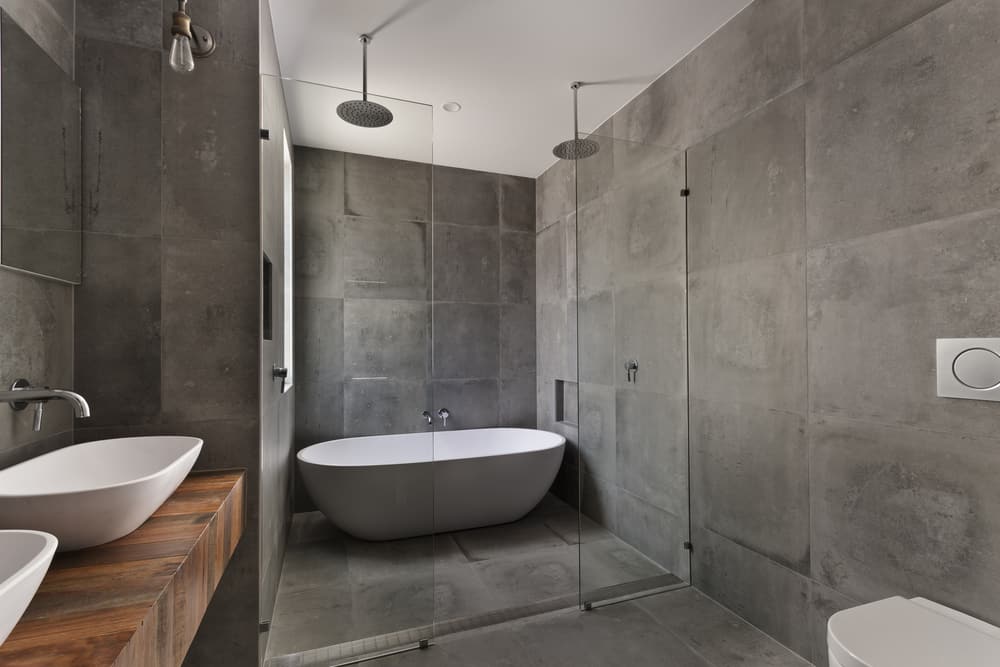
Benefits of Installing Porcelain Tiles
Porcelain tiles are durable and long-lasting. They can withstand high traffic without showing wear, though it is less resistant to heat than ceramic.
Porcelain tiles are an excellent choice for installation in a bathroom, kitchen, or family room. They provide good insulation and soundproofing, which makes them perfect for any space.
They can be custom-made in a variety of sizes and colors to suit your unique taste. Porcelain tiles are also easy to clean because they have a smooth surface that doesn’t trap dirt, hair, or dust as quickly as other flooring materials.
These tiles help reduce noise, making them perfect for the rooms you use the most, like your bedroom, living room, or kitchen.
Porcelain tiles are made of crushed rocks, making them highly durable and long-lasting; they withstand high traffic and are heavyweight.
If porcelain is more for you, make sure to take extra care during installation. The tiles are more fragile than ceramics and may break without the correct tools and technique.
You’ll get more for less with this kind of material, which saves you extra dollars on installation and repairs—provided your contractor uses good porcelain.
Porcelain tiles are heavier than ceramic tiles, which means they’re much more durable.
They also have a higher gloss finish and will resist staining better than their counterpart.
The best part about using porcelain tile is that it’s water-resistant, meaning it won’t absorb any moisture from your bathroom and can be cleaned easily with soap and water.
Porcelain is more resistant to stains and scratches. Keep in mind that it can break easily during installation, though.
Cons of Installing Porcelain Tiles
Porcelain tiles are heavier than ceramic and can crack if not installed correctly. This means you need a professional to do the job right. Porcelain tiles require regular sealing and waxing, which may not be cost-effective for some people.
They are also more expensive than ceramic tiles, but their strength makes up for the difference in cost.
Ceramic Tile Upkeep and Maintenance
Ceramic tiles tend to absorb moisture, so it is essential to lay them to allow for ventilation and airflow. Otherwise, you’ll start to see mold growing.
It is also important to regularly seal your ceramic tiles with a water-resistant sealer available at your local hardware store.
And while it is true that ceramic floors are more slip-resistant than their porcelain counterparts, you should make sure to continue using non-slip mats in the tub.
Porcelain Tile Upkeep and Maintenance
When it comes to porcelain tiles, you’ll want to regularly clean them with soapy warm water and sponges or cloths. Since porcelain tiles are frost-resistant, you won’t need to worry about them cracking.
Porcelain floors are also heat-resistant, so you won’t need to worry about your floor becoming too hot. The best part is that porcelain tiles are easy to clean, so you’ll have no problem keeping them looking their best.
Porcelain tiles are hefty and can be easily broken if not installed correctly. It is vital to hire a professional contractor for this job. If you are looking for a water-resistant floor that is easy to clean, look no further than porcelain tile.
Conclusion
If you’re unsure which type of tile to use, consult with your contractor or ask for advice from friends and family members who have recently remodeled their own homes.
With any tile, it’s essential to seal the grout correctly and regularly cleaned. This will help ensure you don’t end up with unsightly and potentially dangerous grout easily stained.

